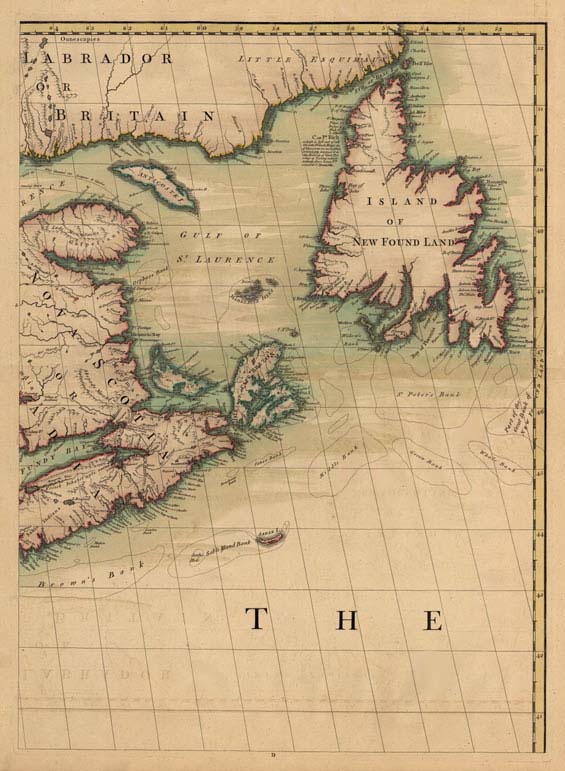|
[Map
of Nova Scotia and Newfoundland.] One plate from “A
Map of the British and French Dominions in North America with the Roads,
Distances, Limits, and Extent of the Settlements Humbly Inscribed to the
Right Honourable The Earl of Halifax and the Other Right Honourable The
Lords Commissioners For Trade and Plantations by their Lordships Most
Obliged and very Humble Servant Jn. Mitchell.
”
Engraving by Thomas
Kitchin.
London: Published
by John Mitchell, 1755.
Dimensions of entire sheet: 21 13/16 X 29 3/16 inches.
Dimensions of image: 19 X 26 inches.
Plate number 5 from Atlas Des Colonies Angloises en Amerique (after
1777). [Title of atlas taken from manuscript title page.]
Click here to view citations for all of the maps.
|


